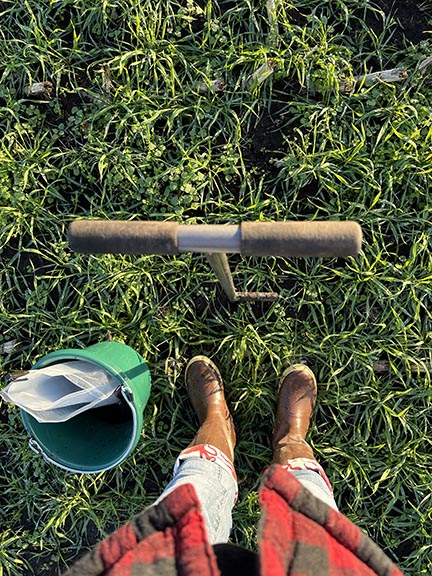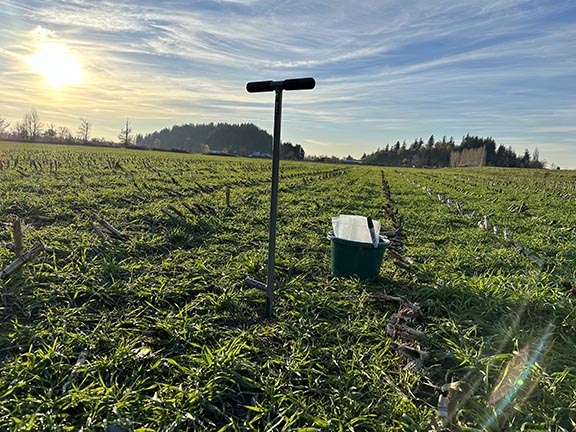Soil Sampling Steps
Materials Needed:
Clean plastic bucket or container
Soil sampling probe
Clean sampling bags
Permanent marker
GPS device or accurate field map (optional but helpful)
Steps to Take a Soil Sample:
Choose Sampling Points: For smaller fields, less than 20 acres, randomly select sampling points. For larger fields, divide the field into zones that have uniform soil characteristics such as soil type, slope, past management history, and crop rotation. Each field or zone should not exceed 15-20 acres unless it has the same soil type and field characteristics. A minimum of 15-20 sampling points per field or zone is recommended to get a representative sample. Use a GPS device or a detailed field map to mark the exact locations of these points for future reference.
Prepare Sampling Tools: Ensure that your soil sampling probe is clean and free from any contaminants that could affect the sample. Use a clean plastic bucket or container to collect soil samples from each point.
Collect Soil Samples: At each sampling point, remove the top inch of any surface debris such as crop residue or rocks. Insert the soil sampling probe or auger into the ground 12 inches (or to the appropriate depth for specific sampling needs). Collect soil cores from multiple points within the sampling zone to a depth that represents the root zone of the crops. Remove the cores using a screwdriver into the bucket.
Mix and Prepare Composite Sample: Combine soil cores from each sampling point into the clean plastic bucket or container. Thoroughly mix the soil to create a composite sample that represents the entire sampling zone.
Fill Sampling Bags or Containers: Fill clean sampling bags or containers with the mixed soil from each sampling field (or zone). Label each bag or container clearly with a permanent marker, indicating the field or zone and sampling point information (ie: field/zone number, date, location or GPS coordinates,).
Repeat for Each Field: Repeat previous steps for each designated field (or zone within the field) until all fields are sampled.




